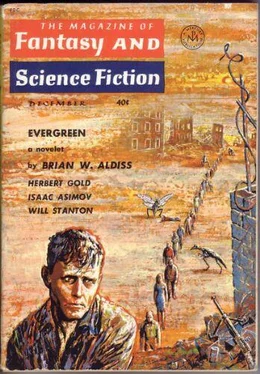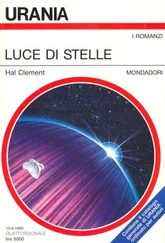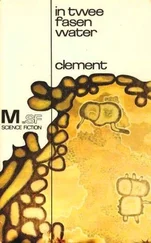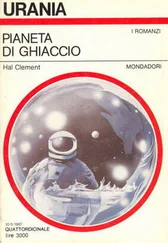MS Fnd in a Lbry
Hal Draper
From: Report of the Commander, Seventh Expeditionary Force, Andromedan Paleoanthropological Mission
What puzzled our research teams was the suddenness of collapse and the speed of reversion to barbarism, in this multigalactic civilization of the biped race. Obvious causes like war, destruction, plague, or invasion were speedily eliminated. Now the outlines of the picture emerge, and the answer makes me apprehensive.
Part of the story is quite similar to ours, according to those who know our own prehistory well.
On the mother planet there are early traces of *books*. This word denotes paleoliterary records of knowledge in representational and macroscopic form. Of course, these disappeared very early, perhaps 175,000 of our yukals ago, when their increase threatened to leave no place on the planet's surface for anything else.
First they were reduced to *micros*, and then to *supermicros*, which were read with the primeval electronic microscopes then extant. But in another yukal the old problem was back, aggravated by colonization on most of the other planets of the local Solar System, all of which were producing *books* in torrents. At about this time, too, their cumbersome alphabet was reduced to mainly consonantal elements (thus: thr cmbrsm alfbt w rdsd t mnl cnsntl elmnts ) but this was done to facilitate quick reading, and only incidentally did it cut down the mass of Bx (the new spelling) by a full third. A drop out of the bucket.
Next step was the elimination of the multitude of separate Bx depositories in favor of a single building for the whole civilization. Every home on every inhabited planet had a farraginous diffuser which tuned in on any of the Bx at will. This cut the number to about one millionth at a stroke, and the wise men of the species congratulated themselves that the problem was solved.
This building, twenty-five miles square and two miles high, was buried in one of the oceans to save land surface for parking space, and so our etymological team is fairly sure that the archaic term liebury ( Lbry ) dates from this period. Within no more than twenty-two yukals, story after story had been added till it extended a hundred miles into the stratosphere. At this level, cosmic radiation defarraginated the scanning diffusers, and it was realized that another limit had been reached. Proposals were made to extend the liebury laterally, but it was calculated that in three yukals of expansion so much of the ocean would be thus displaced that the level of the water would rise ten feet and flood the coastal cities. Another scheme was worked out to burrow deeper into the ocean bottom, until eventually the liebury would extend right through the planet like a skewer through a shashlik (a provincial Plutonian delicacy), but it was realized in time that this would be only a momentary palliative.
The fundamental advance, at least in principle, came when the representational records were abandoned altogether in favor of *punched supermicros*, in which the supermicroscopic elements were the punches themselves. This began the epoch of abstract recs — or Rx , to use the modern term.
The great breakthrough came when Mcglcdy finally invented mass-produced *punched molecules* (of any substance). The mass of Rx began shrinking instead of expanding. Then Gidbg proved what had already been suspected; knowledge was not infinite, and the civilization was asymptotically approaching its limits; the flood was leveling off. The Rx storage problem was hit another body-blow two generations later when Kwlsk used the Mcglcdy principle to develop the *notched electron*, made available for use by the new retinogravitic activators. In the ensuing ten yukals a series of triumphant developments wiped the problem out for good, it seemed:
(1) Getting below matter level, Shmt began by notching quanta (an obvious extension of Kwlsk's work) but found this clumsy. In a brilliant stroke he invented the *chipped quantum*, with an astronomical number of chips on each one. The Rx contracted to one building for the whole culture.
(2) Shmt's pupil Qjt, even before the master's death, found the chip unnecessary. Out of his work, ably supported by Drnt and Lccn, came the *nudged quanta*, popularly so called because a permanent record was impressed on each quantum by a simple vectorial pressure, occupying no subspace on the pseudo-surface itself. A whole treatise could be nudged onto a couple of quanta, and whole branches of knowledge could for the first time be put in a nutshell. The Rx dwindled to one room of one building.
(3) Finally — but this took another yukal and was technologically associated with the expansion of the civilization to intergalactic proportions — Fx and Sng found that quanta in hyperbolic tensor systems could be tensed into occupying the same spatial and temporal coordinates, if properly pizzicated. In no time at all, a quantic pizzicator was devised to compress the nudged quanta into overlapping spaces, most of these being arranged in the wide-open areas lying between the outer electrons and the nucleus of the atom, leaving the latter free for tables of contents, illustrations, graphs, etc.
All the Rx ever produced could now be packed away in a single drawer, with plenty of room for additions. A great celebration was held when the Rx drawer was ceremoniously installed, and glowing speeches pointed out that science had once more refuted pessimistic croakings of doom. Even so, two speakers could not refrain from mentioning certain misgivings. . .
To understand the nature of these misgivings, we must now turn to a development which we have deliberately ignored so far for the sake of simplicity but which was in fact going on side by side with the shrinking of the Rx .
First, as we well know, the Rx in the new storage systems could be scanned only by activating the nudged or pizzicated quanta, etc., by means of a code number, arranged as an index to the Rx . Clearly the index itself had to be kept representational and macroscopic, else a code number would become necessary to activate *it*. Or so it was assumed.
Secondly, a process came into play of which even the ancients had had presentiments. According to a tradition recorded by Kchv among some oldsters in the remote Los Angeles swamps, the thing started when an antique sage produced one of the paleoliterary Bx entitled *An Index to Indexes* (or * Ix t Ix *), coded as a primitive I2. By the time of the supermicros there were several Indexes to Indexes to Indexes (I3), and work had already started on an I4.
These were the innocent days before the problem became acute. Later, Index runs were collected in Files, and Files in Catalogs — so that, for example, C3F5I4 meant that you wanted an Index to Indexes to Indexes to Indexes which was to be found in a certain File of Files of Files of Files of Files, which in turn was contained in a Catalog of Catalogs of Catalogs. Of course, actual numbers were much greater. This structure grew exponentially. The process of education consisted solely in learning how to tap the Rx for knowledge when needed. The position was well put indeed in a famous speech by Jzbl to the graduates of the Central Saturnian University, when he said that it was a source of great pride to him that although hardly anybody knew anything any longer, everybody now knew how to find out everything.
Another type of Index, the Bibliography, also nourished, side by side with the C-F-I series of the Ix . This B series was the province of an aristocracy of scholars who devoted themselves exclusively to Bibliographies of Bibliographies of… well, at the point in history with which we are next concerned, the series had reached B437. Furthermore, at every exponential level, some ambitious scholar branched off to a work on a History of the Bibliographies of that level. The compilation of the first History of Bibliography (H1) is lost in the mists of time, but there is an early chronicled account of a History of Bibliographies of Bibliographies of Bibliographies (H3) and naturally H436 was itself under way about the time B437 was completed.
Читать дальше












